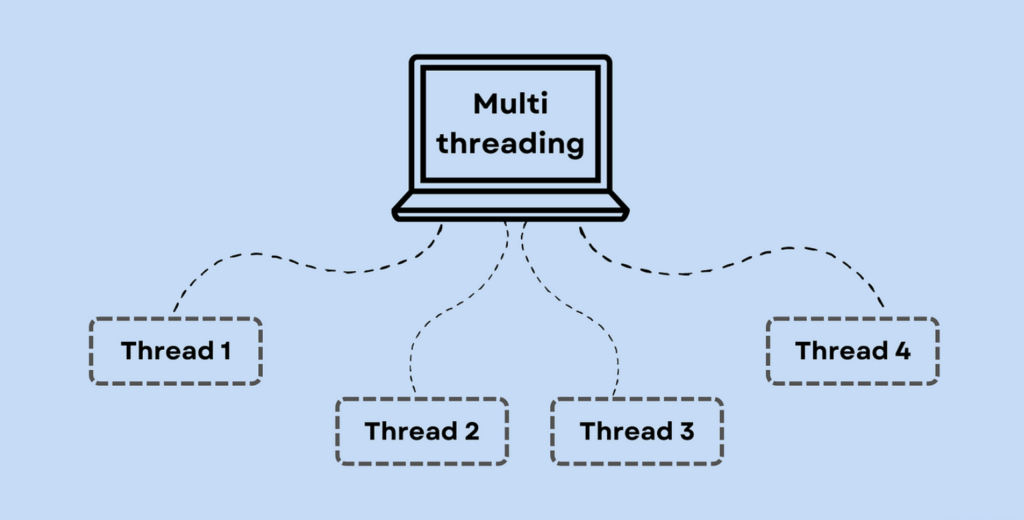
Managing Java effectively can make a significant difference in the performance and reliability of your applications. Java, being one of the most widely used programming languages, requires a strategic approach to ensure optimal results. Whether you are a beginner or an experienced developer, these 10 essential tips for managing Java will guide you through the best practices for maintaining efficiency and productivity.
1. Keep Your Java Environment Updated

One of the most important steps in managing Java is to always keep your Java Development Kit (JDK) updated. New updates come with security patches, performance enhancements, and new features that help your applications run smoothly.
Key tip:
- Regular updates prevent vulnerabilities.
- Improved performance through optimization.
- Access to the latest tools and libraries.
- Compatibility with modern development tools and frameworks.
- Enhanced debugging features for smoother development.
Keeping the JDK updated also aligns with industry standards and helps your development team stay prepared for shifts in technology trends. When updates are neglected, your application may become prone to security risks, and it may lack the latest features that enhance user experiences. Additionally, updating ensures that your code complies with the latest best practices and avoids deprecated functionalities.
2. Optimize Memory Management, Essential Tips for Managing Java

Memory management is crucial in Java, especially for applications handling large data sets or running multiple processes. Effective memory usage ensures stability and prevents unexpected crashes.
Key tips:
- Use the Garbage Collector (GC) efficiently.
- Monitor memory usage with tools like VisualVM.
- Implement best practices such as caching and object pooling.
- Optimize data structures to reduce memory overhead.
- Use weak references for objects that are memory-intensive but infrequently accessed.
Understanding how Java’s Garbage Collector works and tuning it according to the application’s needs can drastically improve memory management. For high-performance applications, experiment with different GC algorithms to find the best match for your workload. Memory leaks are a common challenge; tools like Eclipse MAT (Memory Analyzer Tool) can help detect and address these issues, ensuring that your application remains efficient over time.
3. Leverage Multithreading Carefully

Java provides built-in support for multithreading, which can enhance the performance of your applications. However, improper management of threads can lead to performance bottlenecks or concurrency issues.
Key tips:
- Avoid thread starvation by using thread pools.
- Synchronize shared resources to prevent race conditions.
- Utilize frameworks like ForkJoinPool for parallel processing.
- Manage thread lifecycles effectively to avoid memory leaks.
- Analyze thread dumps to identify potential deadlocks and resolve them.
Multithreading can be highly beneficial for applications that need to perform many tasks simultaneously, but poor implementation can negate these benefits. Use Java’s ExecutorService to manage thread pools efficiently and avoid manual thread management whenever possible. Advanced techniques such as using CompletableFuture for asynchronous programming can also simplify the management of complex thread operations.
4. Implement Secure Coding Practices, Essential Tips for Managing Java
Security should be a top priority when managing Java applications. Implementing secure coding practices helps protect your application from vulnerabilities and potential data breaches.
Key tips:
- Validate all user inputs to prevent injection attacks.
- Use encryption for sensitive data.
- Regularly review code for security flaws.
- Implement access controls and authentication measures.
- Sanitize data to prevent cross-site scripting (XSS) and cross-site request forgery (CSRF).
Security threats are constantly evolving, so keep your coding practices adaptive to these changes. Incorporating security reviews and penetration testing into your development lifecycle can help identify vulnerabilities early and fortify your application against potential attacks. Using tools like OWASP ZAP or SonarQube for security scanning can be invaluable in maintaining robust code integrity.
5. Use Java Profiling Tools, Essential Tips for Managing Java
Java profiling tools are essential for analyzing and optimizing your code. These tools help identify performance bottlenecks, memory leaks, and other inefficiencies.
Recommended tools:
- JProfiler: Comprehensive analysis and performance tuning.
- VisualVM: Monitors application performance and memory usage.
- YourKit: Excellent for both memory and CPU profiling.
- Eclipse MAT (Memory Analyzer Tool): Detects memory leaks and provides insights into memory consumption.
- Perfino: Monitors Java performance in real-time.
Profiling helps uncover hidden issues that might not be evident during regular testing. Use profiling tools during both development and production stages to ensure optimal performance. The insights gained from these tools can guide you in fine-tuning your application, improving response times, and enhancing user experience.
6. Follow Java Coding Standards, Essential Tips for Managing Java
Consistent coding standards improve the readability and maintainability of your Java code. Following a unified style helps teams collaborate more effectively and ensures long-term project sustainability.
Key tips:
- Follow naming conventions for variables, classes, and methods.
- Comment your code for better understanding.
- Use standard Java design patterns for reliable solutions.
- Maintain a consistent indentation and formatting style.
- Refactor code regularly to improve readability and performance.
Standardizing code practices ensures that your project remains scalable and reduces onboarding time for new developers. Additionally, consider using tools like Checkstyle or PMD to automate code quality checks. Establishing a code review process as part of your workflow can also help maintain high standards and catch potential issues early.
7. Manage Dependencies Wisely, Essential Tips for Managing Java
Dependency management is an integral part of any Java project. Using outdated or unnecessary libraries can lead to conflicts and security vulnerabilities.
Key tips:
- Use tools like Maven or Gradle for efficient dependency management.
- Regularly update libraries to their latest stable versions.
- Remove unused dependencies to keep your project clean.
- Avoid version conflicts by defining dependency versions explicitly.
- Use dependency scanning tools to detect potential security risks.
Dependencies should be reviewed frequently to ensure they are up to date with the latest security patches and functionality improvements. Reducing the number of dependencies also minimizes potential attack vectors in your application. Implementing dependency management practices like setting up a centralized repository or using bom (Bill of Materials) files can help in maintaining consistent versions across projects.
8. Optimize Database Connections
For Java applications that rely on databases, optimizing database connections is key to ensuring smooth data retrieval and transaction processing.
Key tips:
- Use connection pooling for efficient database connections.
- Optimize SQL queries to reduce load times.
- Avoid repetitive database calls by implementing caching mechanisms.
- Leverage ORM (Object-Relational Mapping) frameworks like Hibernate for streamlined database management.
- Monitor database performance using profiling tools.
Efficient database connection handling ensures that your application can scale seamlessly and reduces the risk of bottlenecks during peak usage periods. Understanding database indexing and query optimization can further enhance performance. Using tools such as Apache DBCP or HikariCP for connection pooling can significantly reduce database access latency.
9. Test Thoroughly and Continuously
Thorough testing is essential for maintaining a robust Java application. Regular testing helps identify and resolve bugs before they escalate into bigger issues.
Key tips:
- Implement automated tests using frameworks like JUnit or TestNG.
- Use integration testing to check the interaction between different components.
- Run stress tests to see how your application handles high load.
- Incorporate code coverage tools to ensure comprehensive test coverage.
- Perform regression tests after every significant code change.
Continuous testing helps build a culture of quality within the development team. Implement CI/CD (Continuous Integration/Continuous Deployment) pipelines to automate the testing process and speed up the development lifecycle. Adopting practices like test-driven development (TDD) or behavior-driven development (BDD) can further improve code reliability and facilitate smoother development cycles.
10. Stay Updated with Java Community Trends
The Java ecosystem is always evolving, with new frameworks, tools, and best practices emerging regularly. Staying connected with the community ensures you are aware of the latest trends and improvements.
Key tips:
- Follow Java-focused blogs and forums.
- Attend webinars, workshops, and conferences.
- Join online communities for networking and knowledge sharing.
- Contribute to open-source Java projects to improve skills.
- Stay informed about the latest Java releases and updates.
Keeping pace with the community helps you adapt to new technologies and methodologies quickly, giving you a competitive edge. Engaging in discussions and collaborating with peers fosters innovation and helps overcome development challenges. Networking with other developers and sharing insights can also provide fresh perspectives and ideas for tackling complex coding problems.
Final Thoughts
Managing Java effectively involves a combination of regular updates, secure coding, and optimized performance practices. By applying these 10 essential tips, you can ensure your Java applications are not only reliable but also scalable and secure. Make these practices part of your development routine, and you’ll be well-equipped to handle any Java project with confidence.
Taking the time to implement these strategies will not only enhance your development workflow but also contribute to creating applications that meet high industry standards. Adopting a proactive approach to Java management leads to robust, efficient, and future-proof applications. The key is to remain diligent, stay informed, and continuously adapt to the evolving landscape of Java development.
Investing in team training and knowledge sharing further solidifies a strong development foundation. Encourage your development team to keep learning and experimenting with new tools and techniques. When Java management is done right, it paves the way for smooth, productive, and successful software projects.